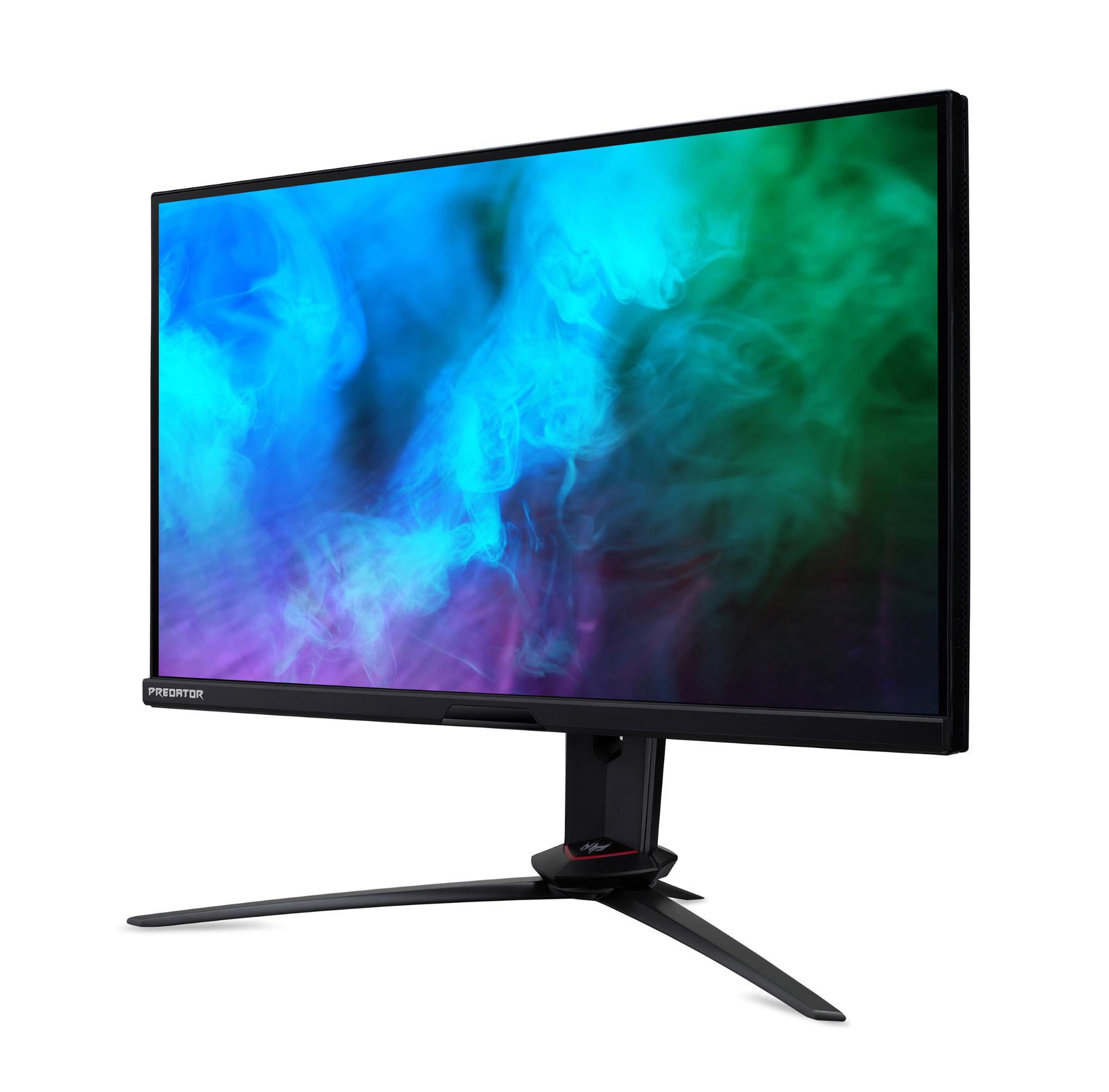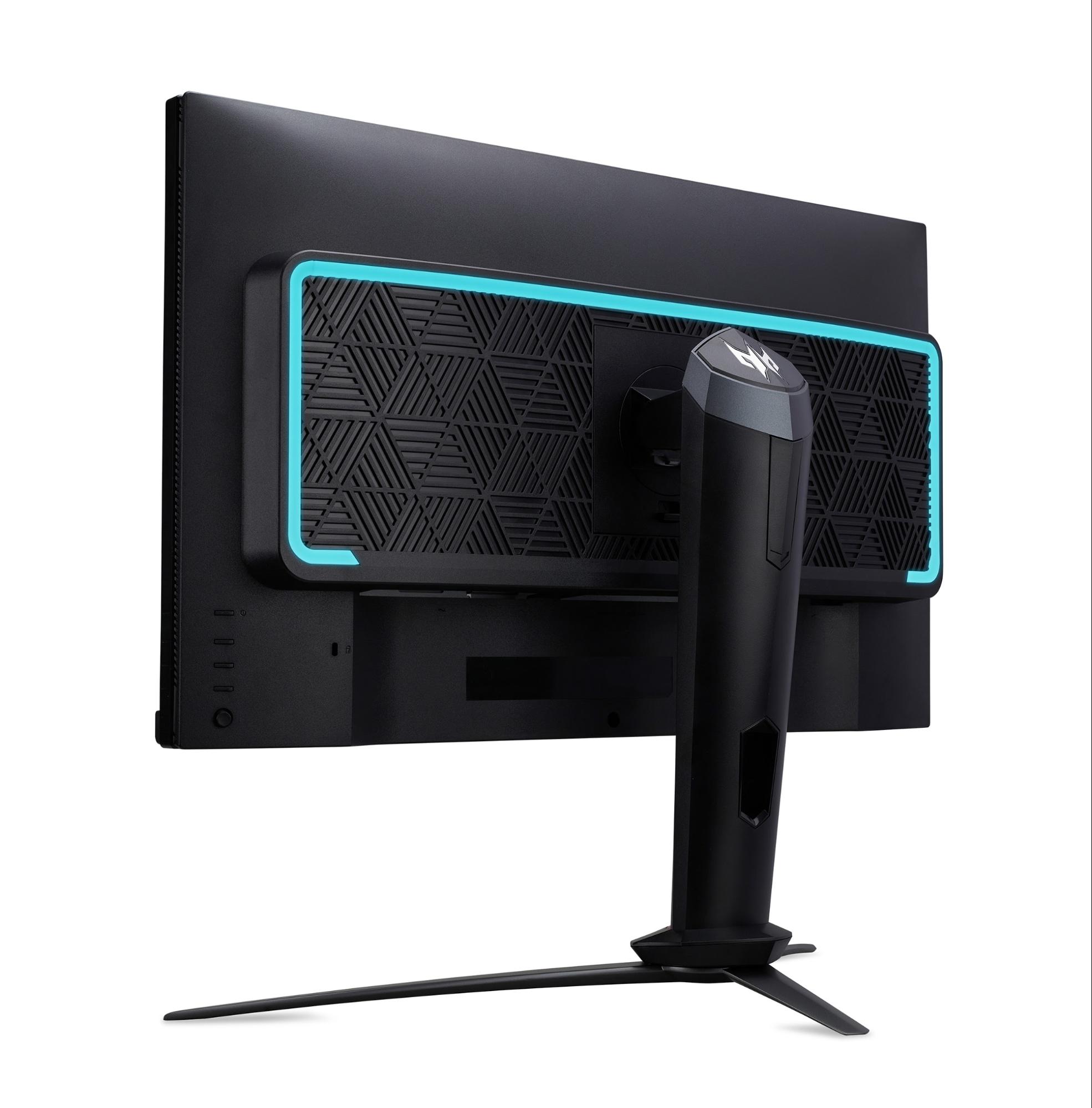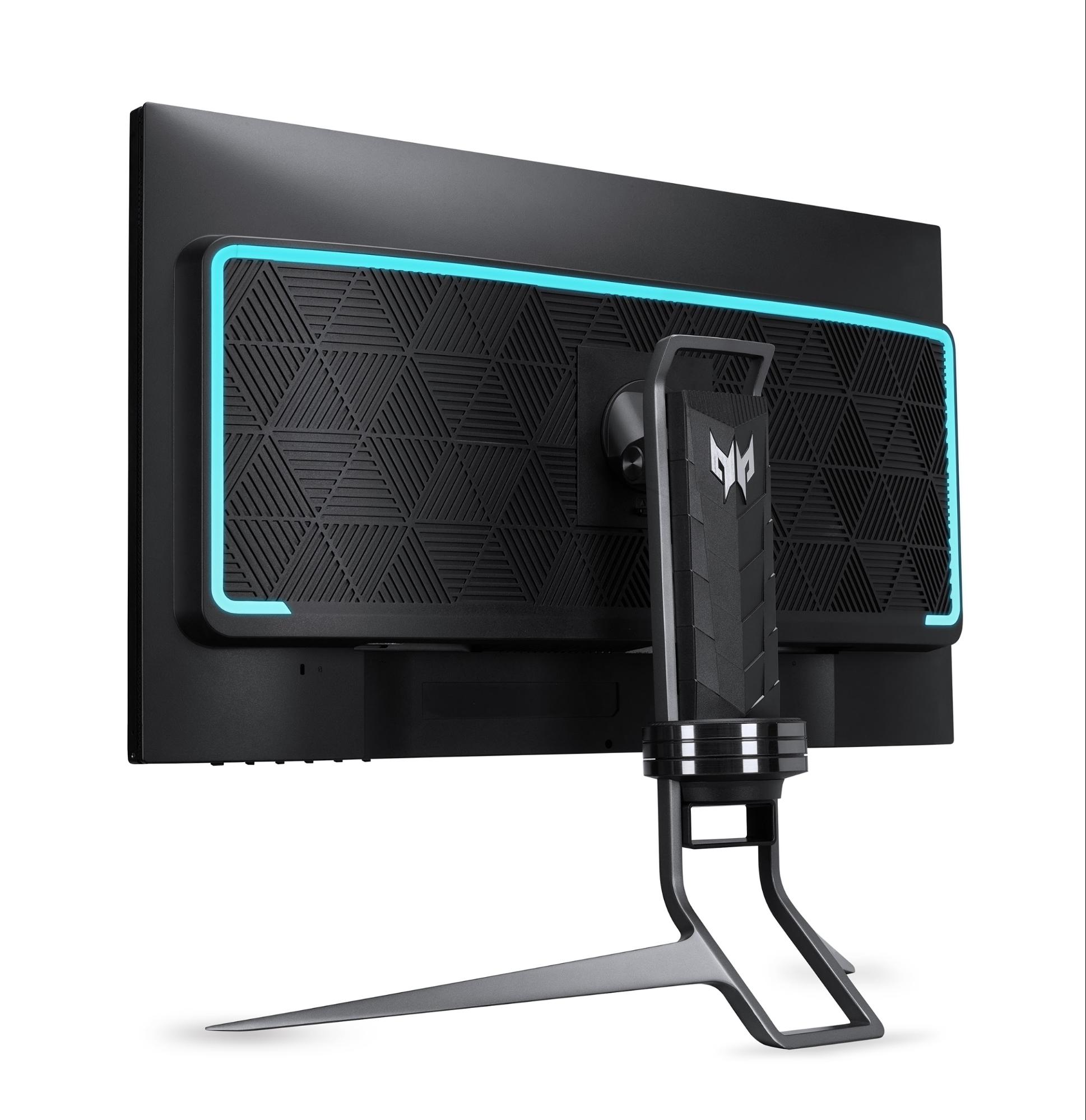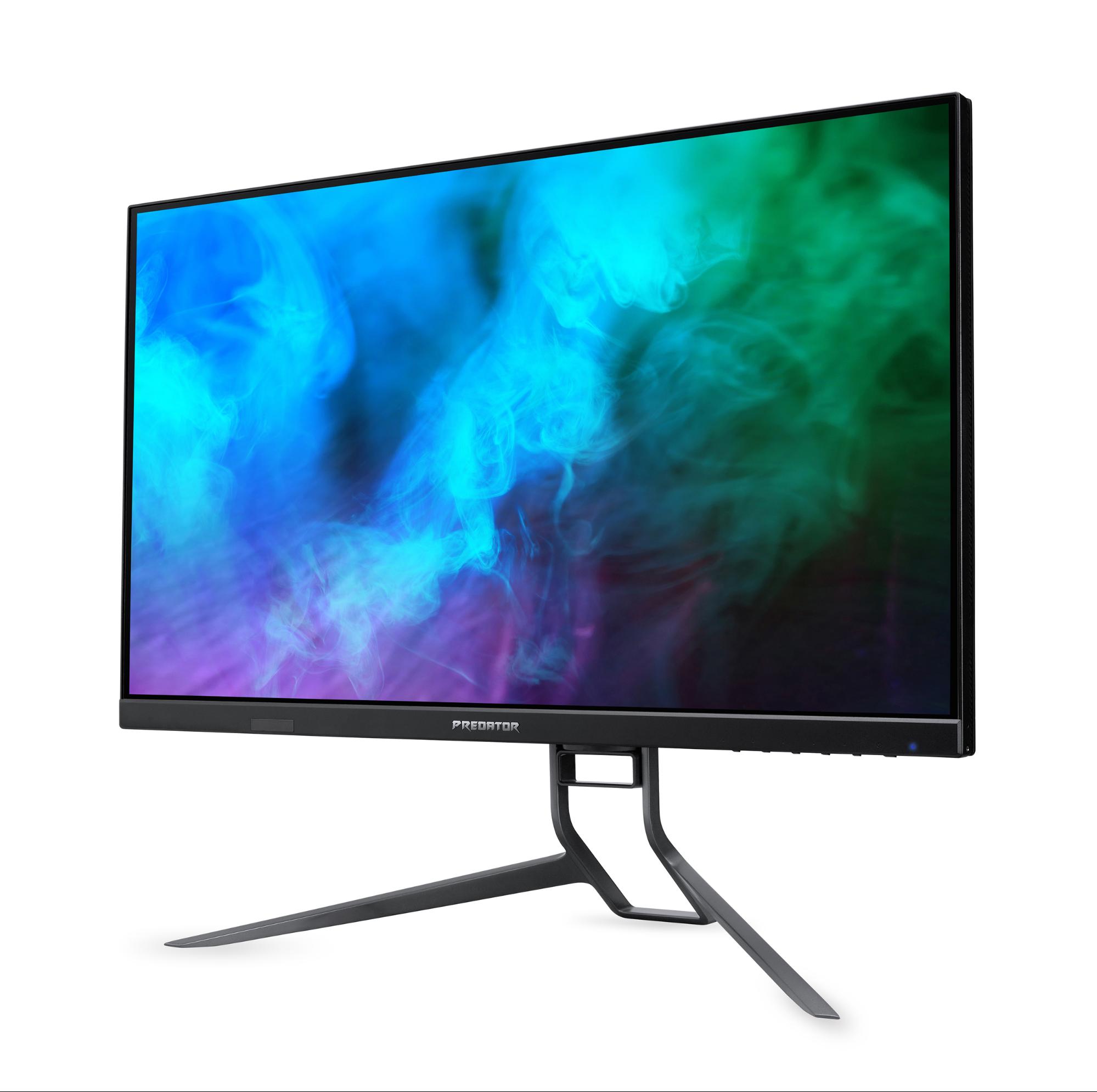Acer Introduces Its First HDMI 2.1 Monitor
An upcoming option for 4K and console gaming
Acer’s marching into the new year with a new(ish) port. The Acer Nitro XV28K KV announced today is the vendor’s first monitor to offer an HDMI 2.1 port, which brings higher bandwidth over its predecessor and should eventually be found on most of the best 4K gaming monitors.
The Nitro XV282K KV announced today is a 28-inch IPS panel with 4K resolution and a max refresh rate of 144 Hz (via DisplayPort, see our DisplayPort vs. HDMI article for more). Its HDMI 2.1 port allows for uncompressed 4K video at a refresh rate of up to 120 Hz, compared to HDMI 2.0’s limit of 60 Hz. It was possible to surpass 120 Hz with HDMI 2.0, but the monitor would have to use compression tactics (for example, the Asus ROG Swift PG43UQ).


With a bandwidth of 48 Gbps compared to HDMI 2.0’s 18 Gbps, HDMI 2.1 also includes uncompressed support for 8K resolution video at 60 Hz, but even the best gaming monitors are a ways away from such high-res.
HDMI 2.1 also helps the Nitro XV282K KV be a little more versatile, allowing for high-speed, 4K gaming with the new PlayStation 5 and Xbox Series X.
For PC gamers, the monitor includes AMD FreeSync Premium, which adds low framerate compensation to your standard screen tear-fighting FreeSync. You also get 90% DCI-P3 color coverage.
The Nitro XV282K KV will be available in May for $900, but Acer isn’t the first to promise an HDMI 2.1 gaming monitor, so the race is on. In August, Asus said it has some in the pipeline but didn’t provide much detail. The crowd-funded Eve Spectrum with HDMI 2.1 is still in the works too.
Surprisingly, Acer is bringing HDMI 2.1 to its Nitro line of monitors before its higher end Predator series. Today, Acer also announced the 27-inch Predator XB273U NX and 31.5-inch Predator XB323QK NV, both lacking the new HDMI port.
Get Tom's Hardware's best news and in-depth reviews, straight to your inbox.


At 1440p resolution, however, HDMI 2.1 isn’t necessary for the Predator XV273U NX. But it does come with another new, lavish feature: Nvidia’s Reflex Latency Analyzer. This is a hardware-software solution that helps you monitor input latency and can reduce it by up to 50%, Nvidia has claimed. This should help serious gamers ensure they’re getting the most out of the monitor’s refresh rate, which is 240 Hz and overclockable to 275 Hz. THat’s coupled with a 0.5ms GTG response time.
While 240 is still more Hz than many gamers need, it’s nice to see Reflex introduced in a more accessible monitor. Up until this announcement, Reflex was only supported by the small number of 360 Hz monitors available.
Acer couldn’t confirm whether or not gamers will need a specific mouse in order to use Reflex with the Predator XV273U NX, but that’s generally the case. As of writing, these mice include the Logitech G Pro Wireless, Asus ROG Chakram Core, Razer DeathAdder V2 Pro and SteelSeries Rival 3, but it’s possible Acer will eventually have its own supported mouse.
Like the Nitro, the Predator XB273U NX is also IPS and adds VESA DisplayHDR 400-certification and 95% P3 color coverage. There’s even a stylish pattern framed in RGB around back. The Predator XV273U NX will be available “in the May timeframe” for $1,100.


Acer’s 31.5-inch Predator XB323QK NV, also RGB-clad, is another 4K IPS screen with a 144 Hz refresh rate. There’s DisplayHDR 400 certification and 90% coverage of P3, and it’s equipped to fight screen tearing with Nvidia G-Sync Compatibility. Acer will release the screen in May for $1,200.

Scharon Harding has over a decade of experience reporting on technology with a special affinity for gaming peripherals (especially monitors), laptops, and virtual reality. Previously, she covered business technology, including hardware, software, cyber security, cloud, and other IT happenings, at Channelnomics, with bylines at CRN UK.
-
Giroro So HDMI 2.1 is only capable to 4k at 120Hz and 8k60? I'm not sure that follows. 8k (7,680 by 4,320) is supposed to be 4x the resolution of 4k (3840 x 2160), right? So wouldn't that require 4x the bandwidth?Reply
I would expect that if you wanted to game at 8k60, then you would need a interface that is capable of playing 4k at 240 Hz. (and also GPU, lol). Or, an interface that topped out at 4k 120Hz should only be able to push 8k30.
Is there some black magic devilry at play? Can HDMI 2.1 run 4k faster than it is currently being used , or does it run 8k slower? Or are other features like HDR factoring in somehow?
Also, I like the look of the stand for the Predator XB273U NX a lot. Hopefully (for the price) it is made of high quality materials like metal, because it would probably be pretty flimsy in plastic. -
spongiemaster Reply
No devilry, but determining supported resolutions/refresh rates can get very complicated. You also have to account for bit depth, whether chromo subsampling is used, HDR support, and if the link is using Display Stream Compression.Giroro said:Is there some black magic devilry at play? Can HDMI 2.1 run 4k faster than it is currently being used , or does it run 8k slower? Or are other features like HDR factoring in somehow?
HDMI 2.1 can support 4k/120Hz with chroma 4:4:4 (no subsampling) at 12 bit color depth. In order to support 8k/60Hz at the same chroma 4:4:4 and 12 bit color depth, Display Stream Compression needs to be used. Otherwise, 4:2:0 subsampling needs to be used to lower the needed bandwidth to 48Gbps and eliminate the need for DSC.
HDMI 2.1 can support 4k 240Hz if desired, but you would have to reduce bandwidth elsewhere (chroma subsampling or lower color bit depth) or use DSC. Using DSC, HDMI 2.1 theoretically can support 10k 120Hz using 4:2:0 subsampling. -
mac_angel So, this again brings up a question I've asked repeatedly that TomsHardware, or any other tech review sites have answered.Reply
This is an HDMI 2.1 4K monitor, without G-Sync. HDMI 2.1 certification requires Variable Refresh Rate as part of the standard. NVidia's Ampere cards are HDMI 2.1, which means they are also suppose to have VRR built into it. This makes G-Sync obsolete. There are many, many displays, both monitors and even TVs that support VRR. Why is no one testing this technology? -
spongiemaster Replymac_angel said:This is an HDMI 2.1 4K monitor, without G-Sync. HDMI 2.1 certification requires Variable Refresh Rate as part of the standard. NVidia's Ampere cards are HDMI 2.1, which means they are also suppose to have VRR built into it. This makes G-Sync obsolete. There are many, many displays, both monitors and even TVs that support VRR. Why is no one testing this technology?
HDMI VRR is not tied to HDMI 2.1. There are HDMI 2.0b devices that support it and not all 2.1 ports do. The link below lists the feature support of many HDMI 2.1 TV's, and you'll see quite a few no current, nor announced VRR support:
List: 4K TVs and 8K TVs with HDMI 2.1
HDMI VRR doesn't make G-Sync any more obsolete than Free Sync tried and failed to. -
thepersonwithaface45 I'm sure by May more monitors with the same HDMI capabilities around 32" and high refresh rates will be available from other brands than Acer due to the new consoles. And then I think they'll get cheaper.Reply -
prolfe Reply
@spongiemaster Thank you for a thorough explanation without the flame or snark so common in online comments these days. I too was wondering how it was possible and I really appreciated your explanation.spongiemaster said:No devilry, but determining supported resolutions/refresh rates can get very complicated. You also have to account for bit depth, whether chromo subsampling is used, HDR support, and if the link is using Display Stream Compression.
HDMI 2.1 can support 4k/120Hz with chroma 4:4:4 (no subsampling) at 12 bit color depth. In order to support 8k/60Hz at the same chroma 4:4:4 and 12 bit color depth, Display Stream Compression needs to be used. Otherwise, 4:2:0 subsampling needs to be used to lower the needed bandwidth to 48Gbps and eliminate the need for DSC.
HDMI 2.1 can support 4k 240Hz if desired, but you would have to reduce bandwidth elsewhere (chroma subsampling or lower color bit depth) or use DSC. Using DSC, HDMI 2.1 theoretically can support 10k 120Hz using 4:2:0 subsampling. -
mac_angel Replyspongiemaster said:HDMI VRR is not tied to HDMI 2.1. There are HDMI 2.0b devices that support it and not all 2.1 ports do. The link below lists the feature support of many HDMI 2.1 TV's, and you'll see quite a few no current, nor announced VRR support:
List: 4K TVs and 8K TVs with HDMI 2.1
HDMI VRR doesn't make G-Sync any more obsolete than Free Sync tried and failed to.
HDMI VRR is meant to be a standard for HDMI 2.1.
https://www.hdmi.org/spec/hdmi2_1
And, yes, there are HDMI 2.0b devices that do have HDMI VRR added on to their devices, which is a very large part of my argument in asking WHY is HDMI VRR not being mentioned, let alone even tested with NVidia's new Ampere GPUs? There are a great number of 4K TVs that do have VRR built in, namely the Samsung Q series TVs, as well as the RU8000 (2019). There are a great many options for displays that have VRR technology that are way cheaper than buying a G-Sync certified TV.
HDMI.org really messed up with their certification of the video signal being compressed OR non-compressed and letting there be an incompatibilty between the two. Hence the HDMI 2.1 bug on A/V Receivers and next gen consoles. But all cables and devices have to match their spec and be tested to support these things before they are allowed to put HDMI 2.1 on their package or page. HDMI VRR is one of these things.
NVidia also promotes the VRR technology within their 30 series GPUs
https://www.nvidia.com/en-us/geforce/news/rtx-30-series-hdmi-2-1/
yet, for some reason, no tech review company even mention this, let alone do any testing. If you search Google, you'll find lots of people asking, as well as it being mentioned from NVidia and HDMI.org, but no reviews even mention it, let alone try it.